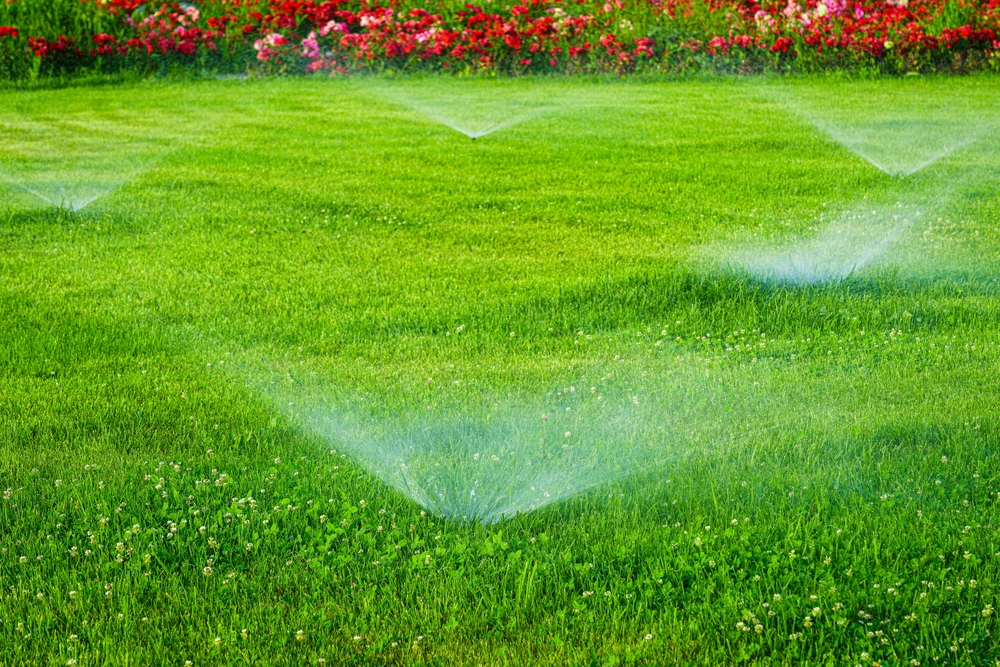How to Create a Water-Efficient Lawn

Creating a water-efficient lawn involves thoughtful planning, smart choices, and ongoing maintenance strategies. With increasing concerns over water conservation and sustainability, creating a lawn that thrives with minimal water is not only beneficial for the environment but also for your wallet. Here’s a comprehensive guide on how to create a water-efficient lawn that remains lush and green year-round.
Assessing Your Lawn’s Needs
Before implementing any changes, it’s crucial to assess your lawn’s current state and its water requirements:
Soil Type and Condition
Understanding your soil type is essential as it dictates water retention and drainage capabilities. Sandy soils drain quickly but may require more frequent watering, while clay soils retain water longer but can become waterlogged. Conduct a soil test to determine its composition and nutrient levels, which will guide amendments.
Local Climate and Weather Patterns
Take into account your region’s climate and seasonal weather patterns. Areas with hot summers or dry spells may require more water-efficient grass varieties and irrigation methods. Research local water restrictions and guidelines to ensure compliance.
Existing Lawn Conditions
Evaluate the health of your current lawn. Look for areas of poor drainage, compacted soil, or overgrown thatch, as these issues can affect water absorption and root growth. Address any underlying problems before proceeding with water-efficient practices.
Choosing the Right Grass and Plants
Selecting the appropriate grass species and plants is crucial for creating a water-efficient lawn:
Native and Drought-Tolerant Species
Opt for grass varieties and plants native to your region or those known for drought tolerance. Native species are adapted to local climate conditions and typically require less water and maintenance once established.
Low-Maintenance Turf Alternatives
Consider alternative ground covers like clover, buffalo grass, or sedges that require less water and mowing than traditional turfgrass. These alternatives can add visual interest and biodiversity to your lawn while reducing water consumption.
Grouping Plants by Water Needs
Create hydrozones by grouping plants with similar water requirements together. This zoning approach allows for more efficient irrigation practices and prevents overwatering or underwatering specific areas of your lawn.
Implementing Water-Efficient Practices
Once you’ve assessed your lawn’s needs and selected suitable plants, it’s time to implement water-efficient practices:
Efficient Irrigation Systems
Install a smart irrigation system that adjusts watering schedules based on weather conditions, soil moisture levels, and plant water requirements. Drip irrigation and soaker hoses deliver water directly to the root zone, minimizing evaporation and runoff.
Proper Watering Techniques
Water your lawn deeply but infrequently to encourage deep root growth and drought resistance. Water early in the morning to reduce evaporation losses and fungal growth. Avoid watering during windy conditions to ensure water reaches its intended target.
Mulching and Soil Amendments
Apply a layer of organic mulch, such as shredded bark or compost, around plants and in garden beds to retain soil moisture, regulate soil temperature, and suppress weed growth. Incorporate organic matter like compost into the soil to improve its structure and water-holding capacity.
Lawn Maintenance Practices
Practice proper lawn care techniques to promote water efficiency:
Mowing and Fertilizing
Set your mower blade to the appropriate height for your grass species and avoid cutting more than one-third of the blade length at a time. Leave grass clippings on the lawn to decompose and return nutrients to the soil. Use slow-release fertilizers sparingly to avoid excessive growth and nutrient runoff.
Aerating and Overseeding
Aerate compacted soil annually to improve air circulation, water infiltration, and root penetration. Overseed bare patches or thin areas with drought-tolerant grass varieties to enhance lawn density and competitiveness against weeds.
Monitoring and Adjusting
Regularly monitor your lawn’s health and adjust your practices as needed:
Observing Plant Health
Inspect your lawn for signs of stress, such as wilting or yellowing leaves, which may indicate inadequate watering or nutrient deficiencies. Adjust your irrigation schedule and nutrient applications accordingly.
Watering Wisely
Be mindful of water usage and adjust irrigation settings based on seasonal weather changes and plant growth stages. Consider installing rain sensors or soil moisture meters to gauge when irrigation is necessary.
Sustainable Lawn Care
Embrace sustainable lawn care practices by reducing chemical inputs, recycling organic materials, and minimizing water use. Encourage biodiversity by incorporating native plants and creating habitat for beneficial insects and wildlife.
Conclusion
Creating a water-efficient lawn requires a combination of planning, plant selection, and mindful maintenance practices. By understanding your lawn’s needs, choosing the right plants, implementing efficient irrigation systems, and monitoring its health, you can enjoy a vibrant and sustainable lawn while conserving water resources. Whether you’re starting fresh or improving an existing lawn, adopting these water-saving strategies will help you create a beautiful outdoor space that thrives with minimal water input.
Need Landscapers in Upstate NY?
Welcome to Rand Hill Lawns, Inc.! We are a family-owned and -operated business that has served the Plattsburgh community since 1986. We are your go-to lawn care consultants! Whether you need landscaping, snow removal, excavating, paving, tree removal, stump removal, or fertilizer, we can do it all. We will not stop working until we get the job done for you! We are licensed and have 30 years of experience in lawn care services. Contact us today for a free estimate!
Categorised in: Lawn Care Tips
